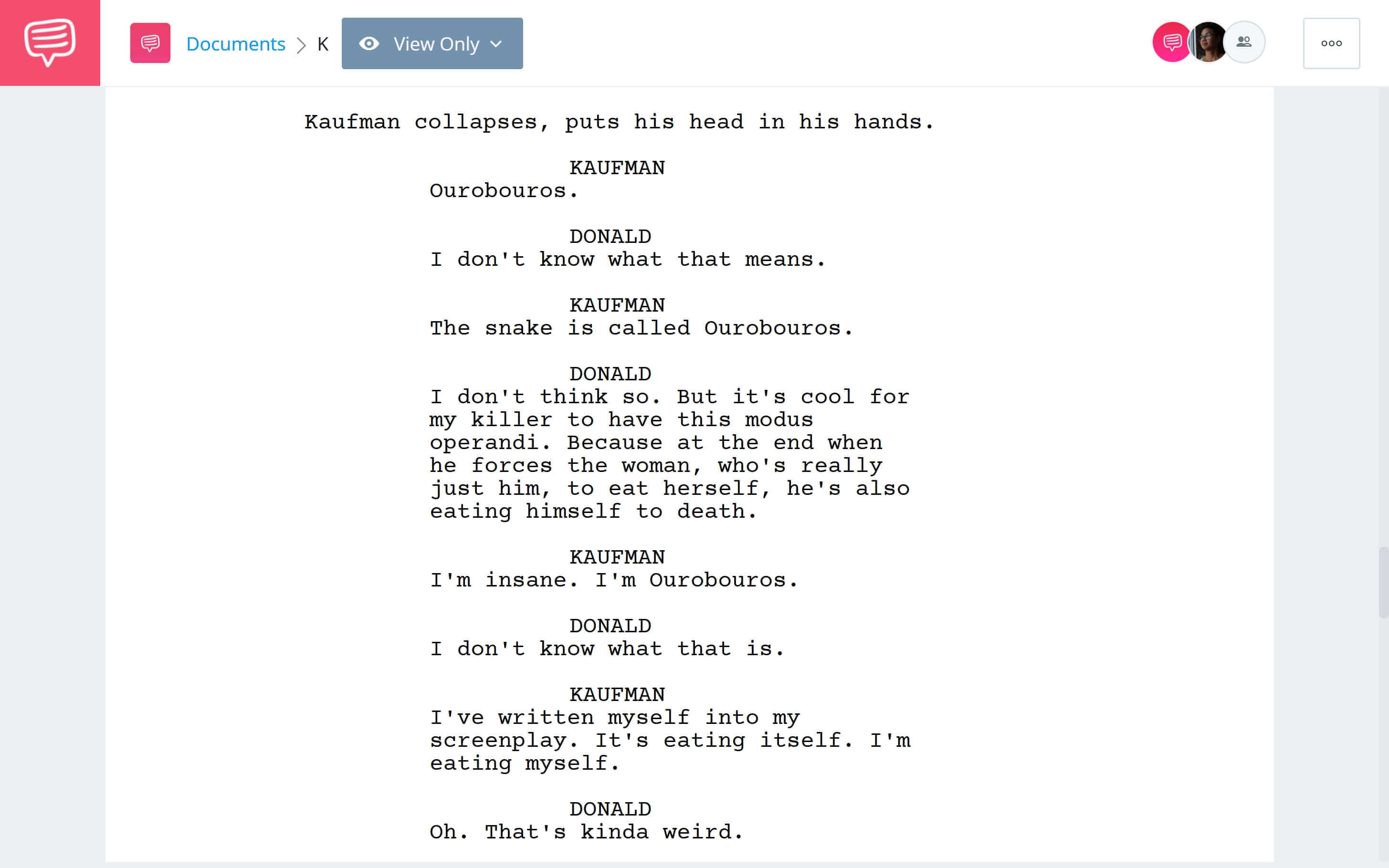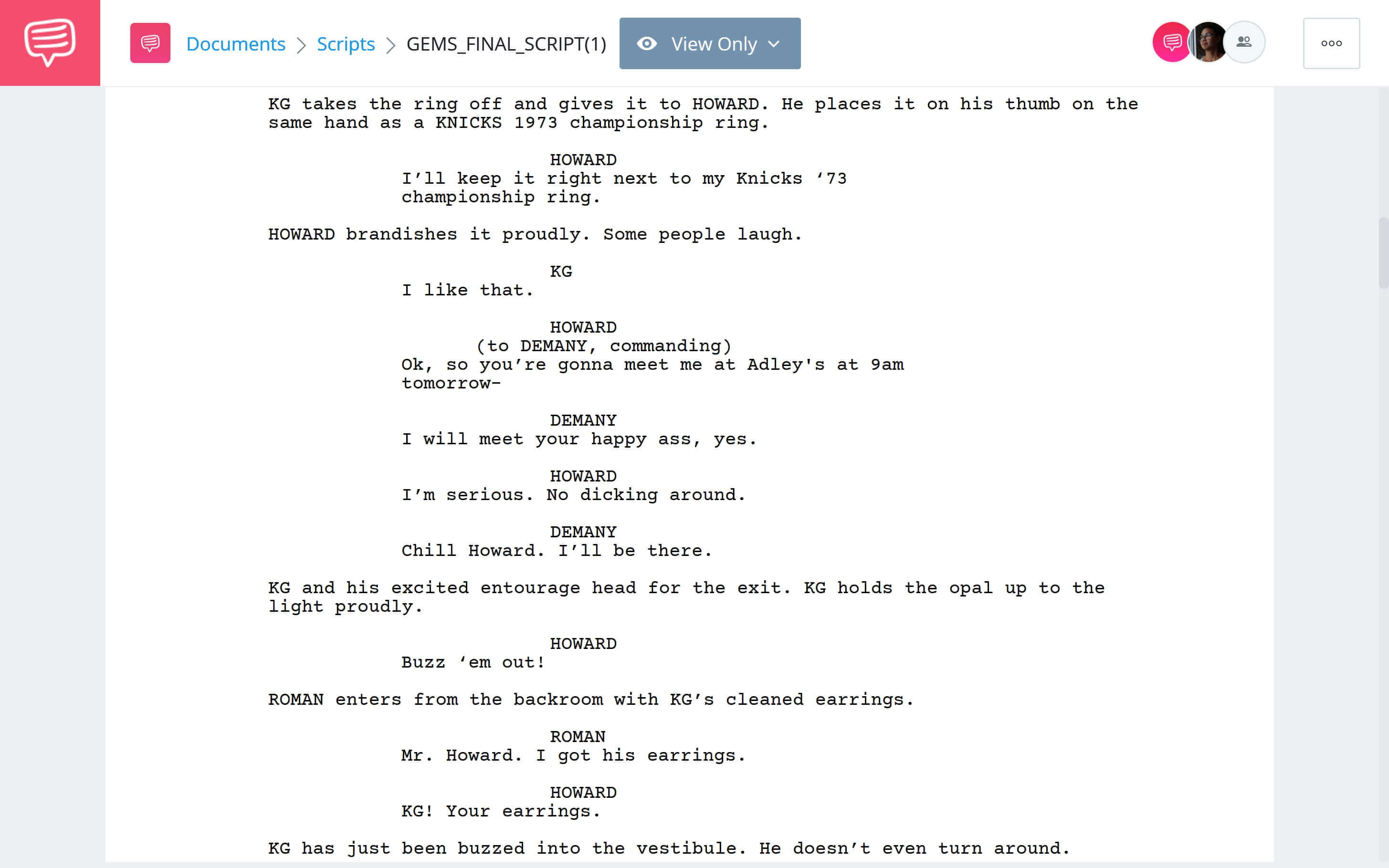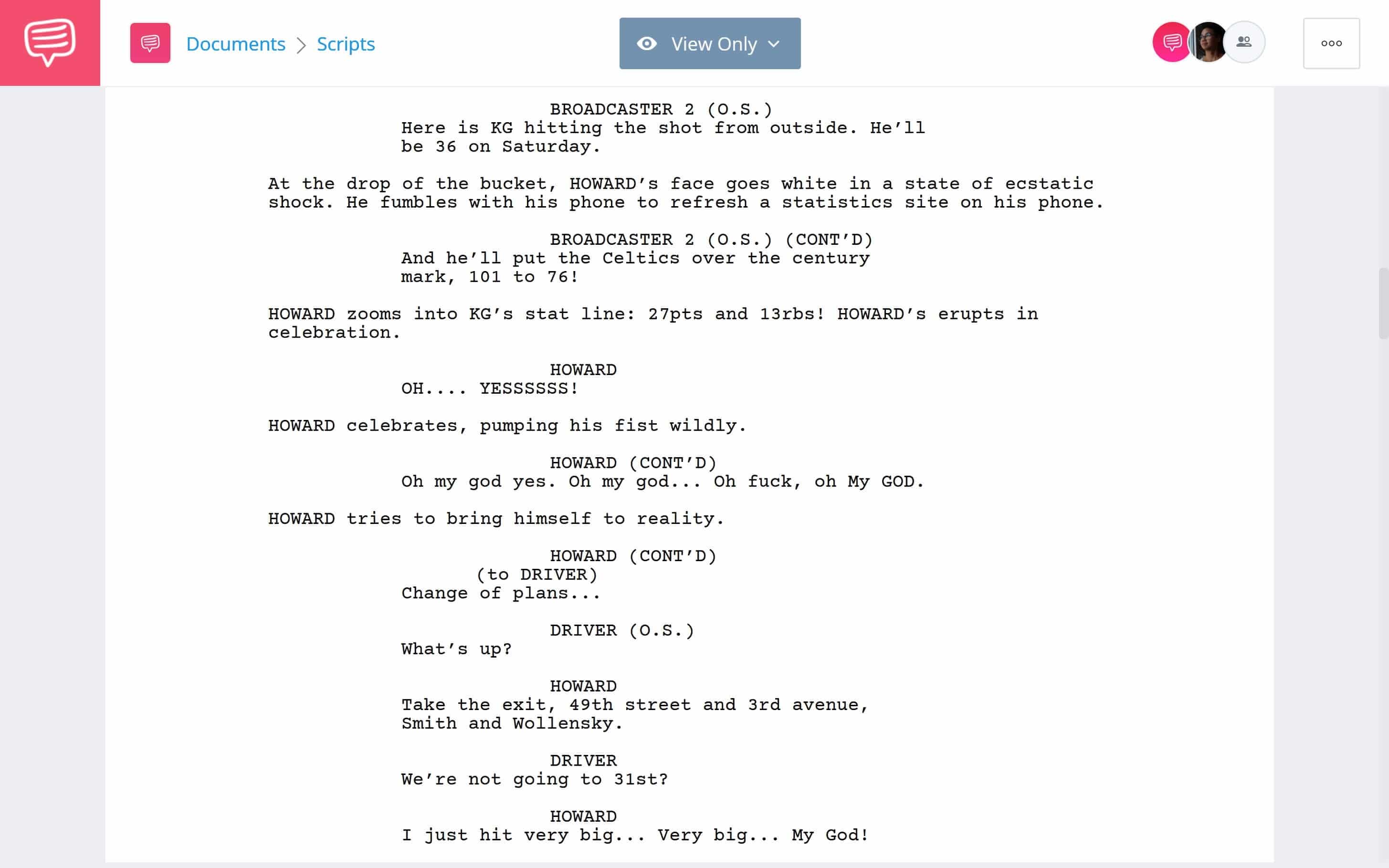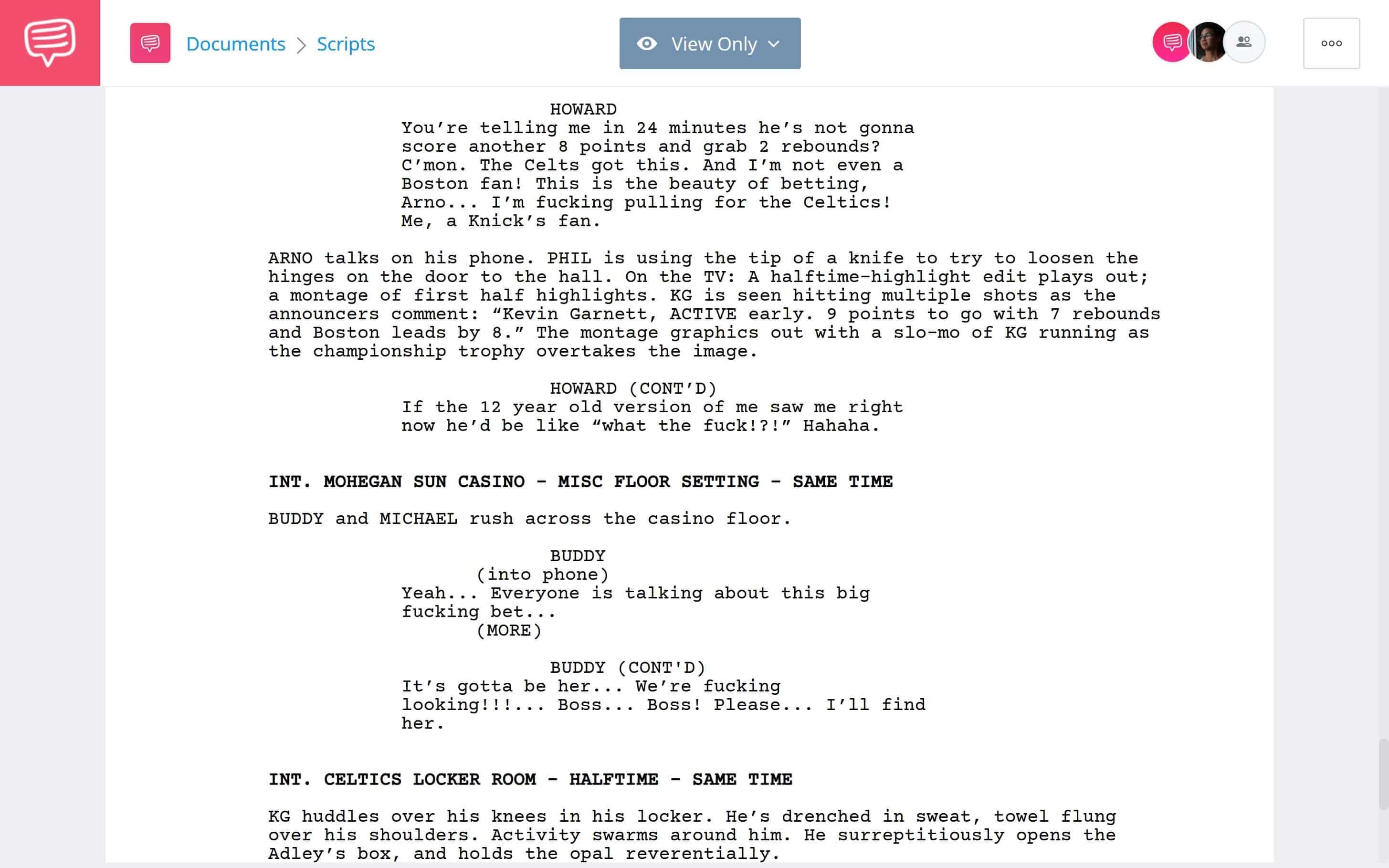Think back to the last movie you saw whose characters were real people, or whose story was based on true events. Did it surprise you? Enrage you? Straight-forward biopics might cut corners here and there but what happens with truth is bent even further? When writers and directors play fast and loose with the truth, interesting things can happen. So, let’s take a look at writing fiction based on true events. Where the truth can be used in creative ways with Tarantino, Charlie Kaufman, and the Safdie Bros. as our guides.
SPOILER ALERT! If you haven’t seen Once Upon a Time…in Hollywood, Adaptation, or Uncut Gems, we are about to discuss major plot points in detail. You’ve been warned!
Writing A True Story
Tarantino's revisionist history
When Quentin Tarantino premiered Once Upon a Time… in Hollywood at the Cannes Film Festival, he was faced with immediate backlash. Some questioned why Sharon Tate, played by Margot Robbie, spoke so few words in the film’s 161-minute runtime.
Others praised the writer-director for allowing Sharon to live out her life on-screen and reclaiming her story from only ever being about her tragic death at the hands of the Manson Family.
Writing fiction based on true events is always tricky but it gets even trickier when you tackle such high-profile and such tragic events.
But almost no one assumed that the real people and true events in the film would be free from a creative license. Audiences anticipated a story that would toy with our ideas about the “real” Sharon and the “real” Manson Family, and that’s a huge reason why the film elicited such sharply divided reactions.
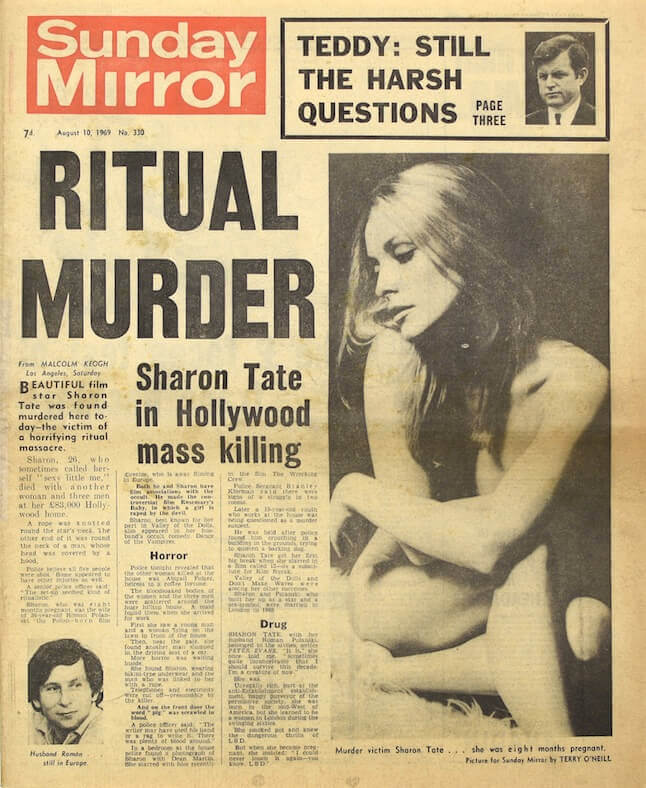
A real tragedy turned into real fiction
Everyone has their own idea of “the truth,” and most people are savvy enough to know that any film that represents reality is exactly that — a representation.
In our video essay, we turn to Once Upon a Time… in Hollywood as our quintessential example of “revisionist history.” Tarantino’s technique taps into a range of emotions about the Manson murders that remain ingrained in our collective consciousness.
As ever, the effectiveness of this approach comes from Tarantino’s dialogue. In the film’s climax, the script combines real quotes with fictional action to create tension and comic relief in equal measure.
On the night of the murders, Tex Watson infamously told Tate’s friend, Wojciech Frykowski, “I’m the devil, and I’m here to do the devil’s business.” In Tarantino’s version, Tex (played by Austin Butler) delivers this line verbatim. But when Cliff (Brad Pitt) is allowed to retort, the dialogue treats Tex’s words like a setup to a punchline.
Watch how the scene plays out below:
Tarantino's revisionist ending
Once this confrontation erupts, Cliff and Rick Dalton (Leonardo DiCaprio), defend Rick’s home from the invading cultists, saving Sharon from the doom she met in real life.
Some viewers may find Tarantino’s resolution to the story cathartic. Others may scoff at its alleged insensitivity toward a tragedy.
This is by design.
Once Upon a Time… in Hollywood’s wish-fulfillment fantasy is built to stir the pot of cultural discourse. By making a new myth out of an already mythological true crime, Tarantino inserts himself in an ongoing conversation about a uniquely American horror story. The end result ranks amongst the best Tarantino films to date.
Of course, sparking heated debate isn’t the only purpose that writing fiction based on true events serves. Sometimes, it's much more personal.
Writing About Yourself
Kaufman's meta-memoir
Tarantino is comfortable courting controversy but other screenwriters tweak the truth for entirely different reasons. To embellish an autobiography, to drive the plot, or simply to give the world a lived-in look and feel.
Consider Adpatation, from director Spike Jonze and writer Charlie Kaufman. Our video essay refers to Kaufman’s screenplay as a “meta-memoir.” In movies like this, the narrator heightens audiences’ awareness of a story’s creation, while offering a subjective account of how its true events took place.
Here's Kaufman briefly explaining how his early attempts at faithful adaptations inspired him to "leap into insanity" with Adaptation, a script high on the list of Kaufman's best screenplays.
Kaufman on the evolution of his adaptations
Kaufman wrote himself, and a fictitious twin brother named Donald, into the film as major characters. The story depicts a crippling case of writer’s block that Charlie experienced in real life. Specifically, his failed bid to adapt Susan Orlean’s The Orchid Thief into a screenplay.
Donald, a mirror image of Charlie, is a figment of Kaufman’s imagination. But in Adaptation, he’s depicted as real — a constant reminder of the career Charlie could have and whose presence only intensifies Charlie’s insecurity and self-doubt.
Let’s take a closer look at how Kaufman pulls this off on the page. We’ve added the script to StudioBinder’s screenwriting software:
Adaptation • Charlie's insecurities • Read Full Scene
By riffing on the twin personalities, Cage’s performance at once captures voices of eternal optimism (Donald) and perpetual self-doubt (Charlie). Voice that compete for attention in the real Kaufman’s head.
Unlike Once Upon a Time… in Hollywood, Adaptation doesn’t revise historical events to affect audiences. Instead, the film’s meta-memoir framework presents its narrator’s perspective as an authoritative account of what it’s like to have writer’s block. Kaufman uses creative license to dramatize the reality of his personal experience, rather than alter the outcome of someone else’s.
What if a screenwriter sees reality as something that isn’t up for debate? Isn’t a matter of perspective?
Working The System
The Safdie Brothers' docufiction
In Uncut Gems, writers Josh and Benny Safdie and Ronald Bronstein treat writing fiction based on true events as cold, hard facts. And yet, the results are still extremely creative — not in spite of their approach, but because of it.
Before we jump into adapting a true story like the Safdie Brothers, let's watch them and their crew explain the challenges behind making such an audacious film.
The Safdies on how they pulled off Uncut Gems
The taut chronology of Uncut Gems unfolds throughout the month of May 2012. Why? Because one of the film’s most important characters is NBA superstar Kevin Garnett. A key plot point is centered around the seven-game playoff series he played in at that time.
Here’s where it gets tricky. The Safdies and Bronstein made Uncut Gems without an NBA licensing agreement.
Under Fair Use laws, a screenwriter can use copyrighted material without permission from the copyright holders. So, the Safdies and Bronstein could legally use any NBA footage they wanted…but only a limited amount, and it couldn’t be altered in any way.
This is a massively creative way of writing fiction based on true events that circumvents the usual red tape involved with obtaining the rights.
These parameters proved to be one of the script’s greatest strengths. After all, Howard is a character less defined by words than by actions. The Safdies and Bronstein could write his compulsive gambling to directly correspond to Garnett’s real performance in the games.
When Howard lends Garnett a rare black opal from his store — the “gem” of the film’s title — Garnett is convinced that the stone’s magic aura will make him unstoppable in the next game he plays.
Naturally, Howard senses that the gem’s effect on Garnett may give him a betting advantage.
Uncut Gems • Getting a Betting Advantage • Read Full Scene
By putting their fictitious gem in the hands of KG, they create opportunities to use actual footage of Garnett dominating the court.
Uncut Gems • Garnett Court Domination • Read Full Scene
And each time Howard watches footage of the real Garnett playing at his best, he’s further emboldened to ramp up his reckless gambling spree.
Uncut Gems • Howard’s Gambling Spree • Read Full Scene
Uncut Gems’ nesting of historical events inside scripted drama is what we might call “docufiction.” The Safdies and Bronstein are no strangers to this narrative and visual style.
Their 2014 feature Heaven Knows What, for instance, features real-life heroin addict Arielle Holmes in its lead role to elevate its aura of authenticity. In Uncut Gems, they take the technique to new heights, using audiences’ familiarity with famous figures to immerse us in the film’s fictional universe.
How to Write an Adaptation
Bring the truth to your writing
What twist will you put on your true-ish story?
Using revisionist history, you’re free to appropriate and alter the words and actions of an important historical event.
With the meta-memoir, you can engender empathy from your audience by aligning them with your narrator’s perspective of a true story.
In docufiction, you can let true events as they actually happened steer the course of your characters’ narrative trajectory.
With any of these three approaches in your artistic arsenal, you’ll be ready to blend fact and fiction in a world of your own making.
UP NEXT
Academy rules on adapted scripts
After covering such creative adapted screenplays, you might be inspired to actually write on yourself. Despite Tarantino, Kaufman and the Safdie Brothers' redefining "creative license," there are other factors that go into writing an adapted screenplay. We'll cover the Academy rules, tips on obtaining rights and advice from some of today's top screenwriters.

